It looks like you're using an Ad Blocker.
Please white-list or disable AboveTopSecret.com in your ad-blocking tool.
Thank you.
Some features of ATS will be disabled while you continue to use an ad-blocker.
share:
I figured a screenshot of the seismograph would be good for future comparisons in case the links no longer work. It seems you can only see the past
few days.
Here's how Dec 28, 2008 ended:

Larger version:
i496.photobucket.com...
From:
www.quake.utah.edu...
Here's how Dec 28, 2008 ended:

Larger version:
i496.photobucket.com...
From:
www.quake.utah.edu...
Originally posted by SLAYER69
From that docu I saw they said that the midwest and eastward would be totaly waisted by an unbelievable blast on a scale we have not seen on Earth in something like a million years, man if that thing went like it once did we would have a new myth of the Americas in about 10.000 years.
I live in the Pacific northwest so I should be ok from the initial blast but not from the after math
[edit on 28-12-2008 by SLAYER69]
74,000 years to be exact is when the Toba Disaster in Indonesia.
Toba Catastrophe - Nuclear Winter - genetic bottleneck
If Yellowstone blows at that magnitude it will plunge the earth
into nuclear winter, and basically wipe out all livestock and
crops in North America.
It would be the end of North America as we know it.
The rest of the world would just suffer many years of VERY brutal
winters and deal with a severe acid rain for a few years.
Florida might fair well enough to get fruit out.
reply to post by asmall89
I was in the Grand Teton National Park and Yellowstone in 1970-75 and Quakes were normal everyday. If your scared to go back to yellowstone
either your very timid or just plain scared at your own shawdow. Yellowstone is the biggest volcano on the earth and naturaly there will be trimmors.
Don't stop yourself from seeing the best scenery in the world because of trimmors that have been occuring for centuries. You will be killed by a car
accident way before a quake,get a grip and go back and quit being such a panzy,when the time for you to die it won't be because of a earthquake,JESUS
grow some balls.
reply to post by Curious_Agnostic
Nice Curious, I was grabbing some screens as well.
Just in case this calms down and there are future swarms to compare too in the future.
Nice Curious, I was grabbing some screens as well.
Just in case this calms down and there are future swarms to compare too in the future.
This is a live streaming webcam, with what appears to be an overdubbed, looping audio stream presentation, because I have heard the same thing repeated now. Check it out:
[edit on 28-12-2008 by TrueAmerican]
LOL. Call me an idiot. I immediately went to see the webcam but, considering it is midnight, did not see a thing. I even thought the thing was not working. Duh! Shouldn't be up so late, clearly my brain doesn't function well at this time.
Originally posted by Alienmojo
Originally posted by TwiTcHomatic
reply to post by speaknoevil07
No super-volcano has gone off in recorded history.
Known super-volcano explosions:
Estimates of the volume of ejected material are given in parentheses.
VEI 8 eruptions have happened in the following locations.
Lake Taupo, North Island, New Zealand - Oruanui eruption ~26,500 years ago (~1,170 km3)
Lake Toba, Sumatra, Indonesia - ~75,000 years ago (~2,800 km3)
Whakamaru, North Island, New Zealand - Whakamaru Ignimbrite/Mount Curl Tephra ~254,000 years ago (1,200-2,000 km3)[5]
Yellowstone Caldera, Wyoming, United States - 640,000 years ago (1,000 km3)
Island Park Caldera, Idaho/Wyoming, United States - 2.1 million years ago(2,500 km3)
Kilgore Tuff, Idaho, United States - 4.5 million years ago (1,800 km3)
Black Tail Creek, Idaho, United States - 6.6 millions years ago (1,500 km3)
La Garita Caldera, Colorado, United States - Source of the truly enormous eruption of the Fish Canyon Tuff ~27.8 million years ago (~5,000 km3)
The Lake Toba eruption plunged the Earth into a volcanic winter, eradicating an estimated 60%[6][7][8][9][10] of the human population (although humans managed to survive, even in the vicinity of the volcano[11]), and was responsible for the formation of sulfuric acid in the atmosphere.
Information obtained from: en.wikipedia.org...
Hence, "recorded history".
It would be interesting to know if they are reducing the amount of visitors permitted in the park or stopping people from visiting altogether.
Originally posted by LazyGuy
Yellowstone has blown it's top three times in the last 2.1 million years.
Source
The three supereruptions occurred 2.1 million, 1.3 million and 640,000 years ago; forming the Island Park Caldera, the Henry's Fork Caldera, and Yellowstone calderas, respectively
From 2.1 million years ago to 1.3 million years ago there are 800,000 years.
From 1.3 million years ago to 640,000 years ago there are 660,000 years.
Since we've only got three data points it's tough to make any judgments but the data seems to suggests that an eruption could occur at any time.
I wonder what all of those people who actually believe that the Earth is 6,000 years old think about all of this....
There's interesting spacing between the activity.
If it is haarp or haarp accidents, will it be less in the middle of the night?
My neighbor was flown to mt. st. helens - before he retired he was quite the seismologist I gather. I sent him the link and he said a Bob Smith with Uni of Utah would be the one to ask about this. I'm going to try to look him up. He also said that before st. H blew the activity was around 1000 a day in one spot like this and we're not there yet.
He's a calm elderly gentleman, I'll let you know what else he says after he looks at the links and gets back to me you know - these things can't be rushed
If it is haarp or haarp accidents, will it be less in the middle of the night?
My neighbor was flown to mt. st. helens - before he retired he was quite the seismologist I gather. I sent him the link and he said a Bob Smith with Uni of Utah would be the one to ask about this. I'm going to try to look him up. He also said that before st. H blew the activity was around 1000 a day in one spot like this and we're not there yet.
He's a calm elderly gentleman, I'll let you know what else he says after he looks at the links and gets back to me you know - these things can't be rushed
Originally posted by haika
Originally posted by LazyGuy
Yellowstone has blown it's top three times in the last 2.1 million years.
Source
The three supereruptions occurred 2.1 million, 1.3 million and 640,000 years ago; forming the Island Park Caldera, the Henry's Fork Caldera, and Yellowstone calderas, respectively
From 2.1 million years ago to 1.3 million years ago there are 800,000 years.
From 1.3 million years ago to 640,000 years ago there are 660,000 years.
Since we've only got three data points it's tough to make any judgments but the data seems to suggests that an eruption could occur at any time.
I wonder what all of those people who actually believe that the Earth is 6,000 years old think about all of this....
Those people don't think.
Sorry, couldn't resist
ko3
Source
And
This is from an article written just over a year ago. I recommend reading the whole article, it's very informative.
The Yellowstone “supervolcano” rose at a record rate since mid-2004, likely because a Los Angeles-sized, pancake-shaped blob of molten rock was injected 6 miles beneath the slumbering giant, University of Utah scientists report in the journal Science.
“There is no evidence of an imminent volcanic eruption or hydrothermal explosion. That’s the bottom line,” says seismologist Robert B. Smith, lead author of the study and professor of geophysics at the University of Utah. “A lot of calderas [giant volcanic craters] worldwide go up and down over decades without erupting.”
The upward movement of the Yellowstone caldera floor – almost 3 inches (7 centimeters) per year for the past three years – is more than three times greater than ever observed since such measurements began in 1923, says the study in the Nov. 9 issue of Science by Smith, geophysics postdoctoral associate Wu-Lung Chang and colleagues.
“Our best evidence is that the crustal magma chamber is filling with molten rock,” Smith says. “But we have no idea how long this process goes on before there either is an eruption or the inflow of molten rock stops and the caldera deflates again,” he adds.
The magma chamber beneath Yellowstone National Park is a not a chamber of molten rock, but a sponge-like body with molten rock between areas of hot, solid rock.
And
Conventional surveying of Yellowstone began in 1923. Measurements showed the caldera floor rose 40 inches during 1923-1984, and then fell 8 inches during 1985-1995.
GPS data showed the Yellowstone caldera floor sank 4.4 inches during 1987-1995. From 1995 to 2000, the caldera rose again, but the uplift was greatest – 3 inches – at Norris Geyser Basin, just outside the caldera’s northwest rim.
During 2000-2003, the northwest area rose another 1.4 inches, but the caldera floor itself sank about 1.1 inches. The trend continued during the first half of 2004. Then, in July 2004, the caldera floor began its rapid rate of uplift, followed three months later by sinking of the Norris area that continued until mid-2006.
Smith believes that uplift of the middle of the caldera decreased pressure within rocks along the edges of the giant crater, “so it allowed fluids to flow into the area of increased porosity.” That, in turn, triggered small earthquakes along the edge of the “pancake” of magma. The amount of hot water flowing out of the deflated Norris area is much smaller than the volume of magma injected beneath the caldera, Smith says.
This is from an article written just over a year ago. I recommend reading the whole article, it's very informative.
on the website these type of quakes are said to be normal...why is everybody panicking, if the "quake scientists" are not?
Well so far folks, here in Casper its quiet, cept for a bit of wind, no ground shaking, nothing falling off the walls, pretty much a quiet evening in
central Wy.
If Yellowstone pops its top, or begins to, that will be felt for miles in every direction. When it does go, from where I am at, I will have about 30 minutes to get out of dodge and at least be just ahead of the outer edge of the nice sulfer filled soot.
According to the predictions, that cloud will envelop an area of 300 mile radious in 30 minutes, possibly even less.
Neat..eh?!!!
Cheers!!!!
[edit on 29-12-2008 by RFBurns]
If Yellowstone pops its top, or begins to, that will be felt for miles in every direction. When it does go, from where I am at, I will have about 30 minutes to get out of dodge and at least be just ahead of the outer edge of the nice sulfer filled soot.
According to the predictions, that cloud will envelop an area of 300 mile radious in 30 minutes, possibly even less.
Neat..eh?!!!
Cheers!!!!
[edit on 29-12-2008 by RFBurns]
reply to post by MagicaRose
EVERYONE in North America would/will die if this thing erupts... as well as 60-70% of the remaining world population.
EVERYONE in North America would/will die if this thing erupts... as well as 60-70% of the remaining world population.
Maybe not just ground temps but also lake temps
As those quakes have only been hitting the lake...
As those quakes have only been hitting the lake...
Now, I am still not 100% sure how to interpret this data from the LKWY correctly, not even after reading instructions, but if you put the day-to-day
data behind each other, starting just after Christmas on 12-26 there seems to be an intensifying pattern:
December 26, 2008
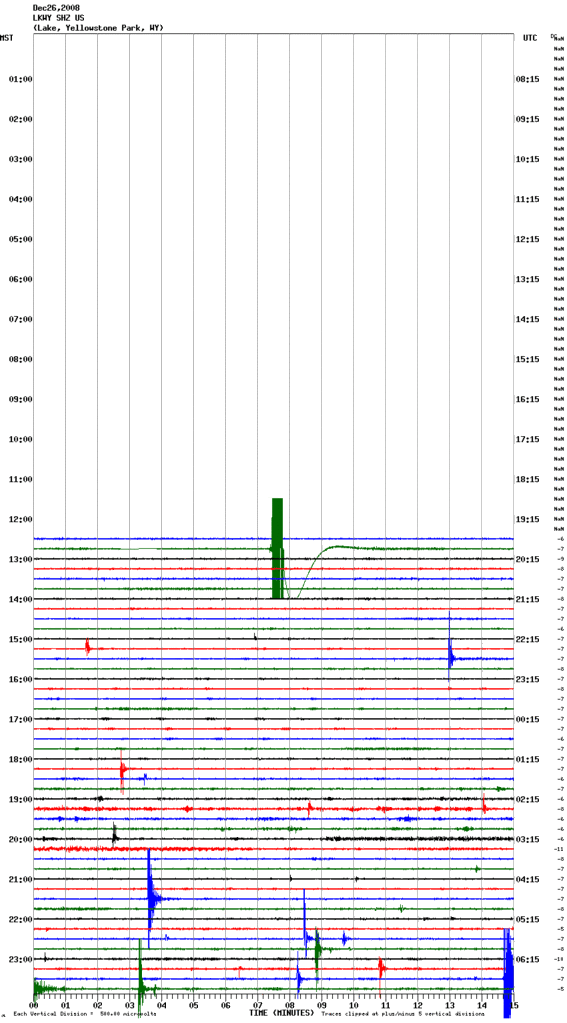
December 27, 2008
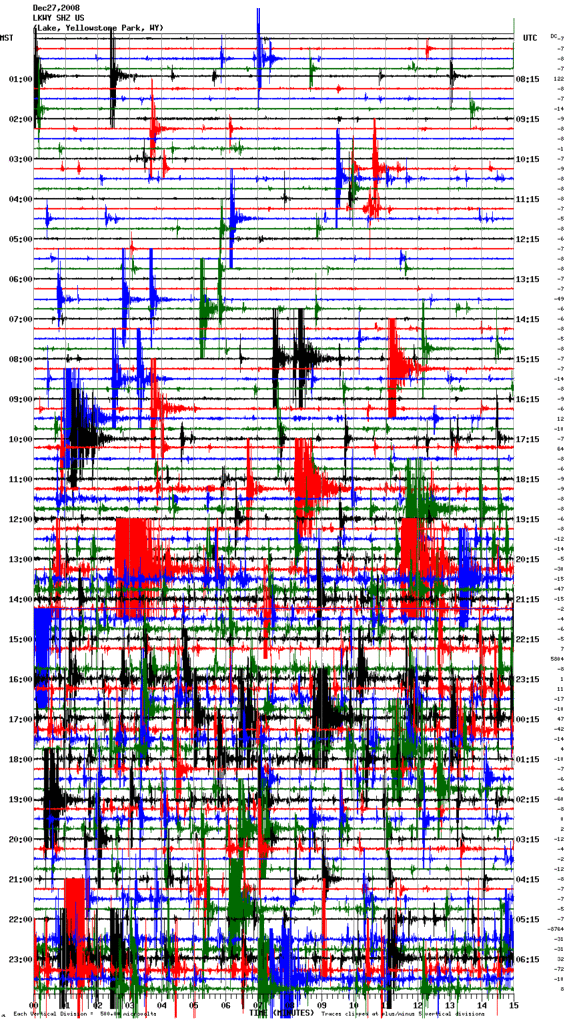
December 28, 2008
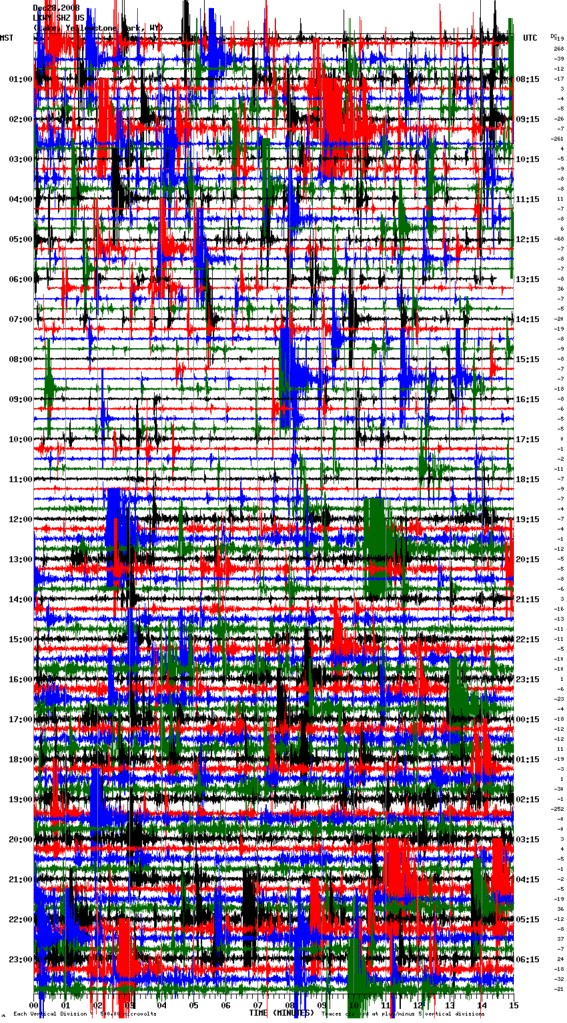
December 29, 2008

Does not look like de-escalation to me. Nice green spike just now. I think I´ll have a look at the data from the other nearby recorders as well.
MoonMine
December 26, 2008

December 27, 2008

December 28, 2008

December 29, 2008

Does not look like de-escalation to me. Nice green spike just now. I think I´ll have a look at the data from the other nearby recorders as well.
MoonMine
Yes, it was pretty much calm before the swarm. I've read anyway that strong winds can bring much noise in seismograph charts. If in the last days the
weather in the area has worsened maybe the "busy" lines in the charts are because of it, and not volcanic activity.
reply to post by Shirakawa
We dont call it "Windy Wyoming" for nothing!
Gets very windy out here. I think the worst place for wind however is not up near Yellowstone, but in Rawlins and all along I-80. Worst areas for wind. If you dont want a bad hair day, avoid southern Wyoming!
Cheers!!!!
We dont call it "Windy Wyoming" for nothing!
Gets very windy out here. I think the worst place for wind however is not up near Yellowstone, but in Rawlins and all along I-80. Worst areas for wind. If you dont want a bad hair day, avoid southern Wyoming!
Cheers!!!!
These are the three measuring stations closest to the lake LKW, YLT & YTP:
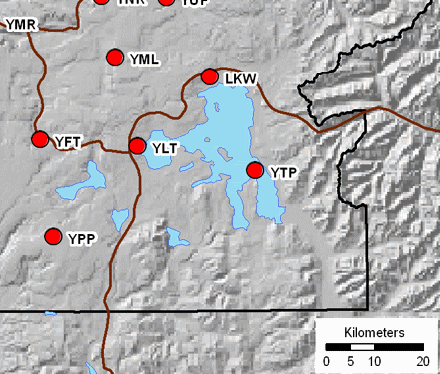
I apologize for the large post, but the images are duly compressed and I think it is good to see the overview on a single page.
LKW (North Station) See previous.
YLT (West station):
December 26

December 27
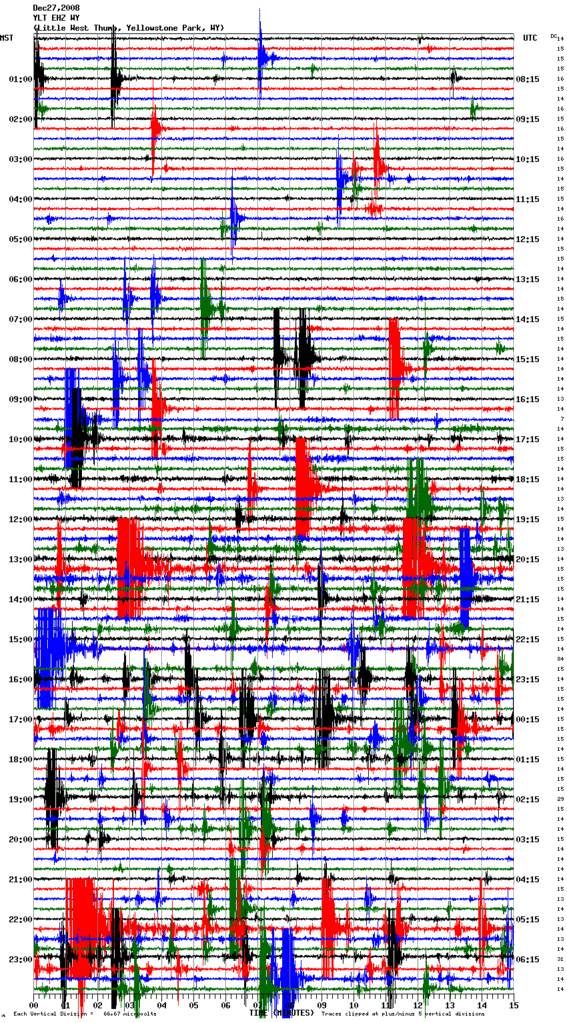
December 28
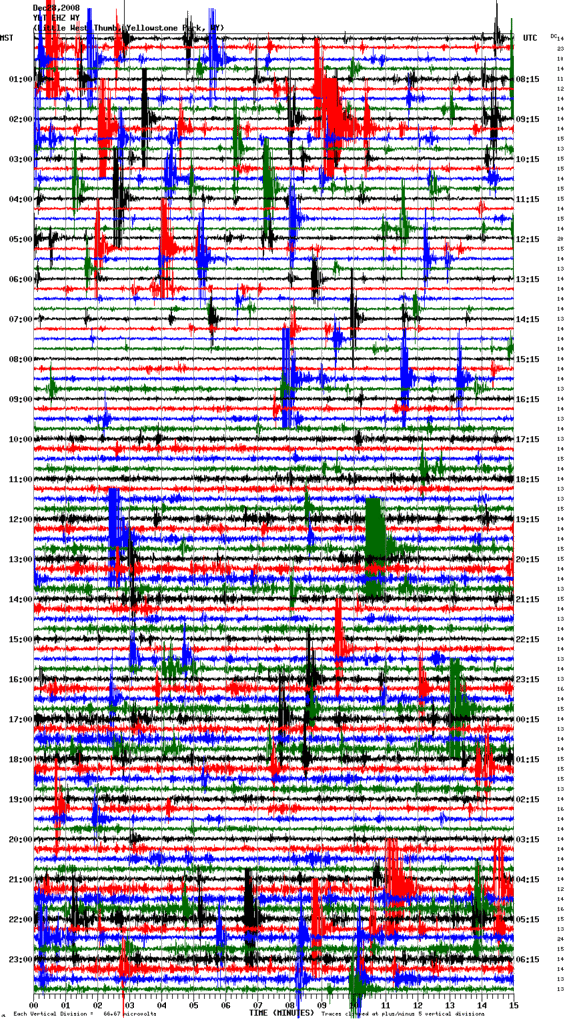
December 29
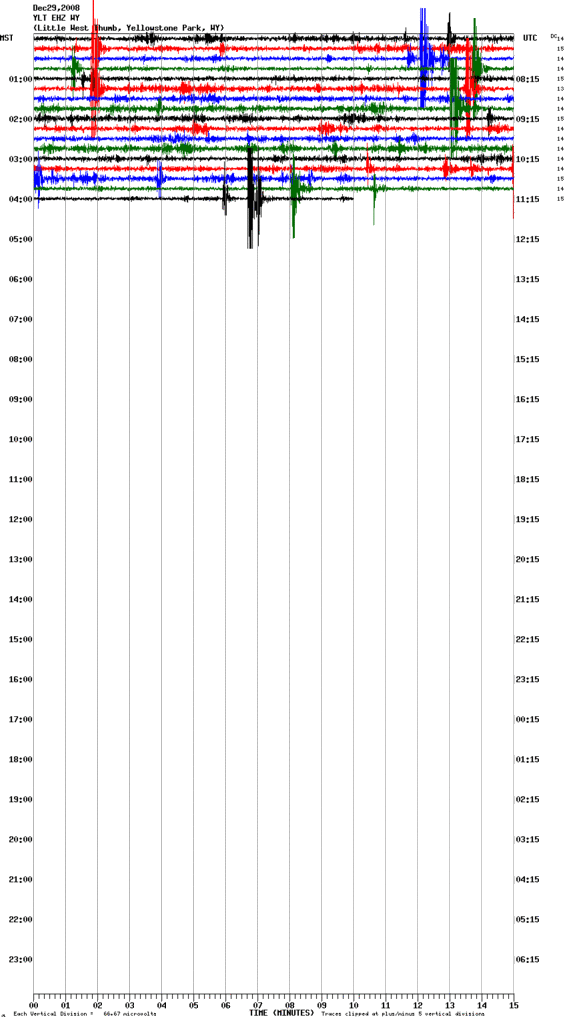
YTP (East Station):
December 26

December 27
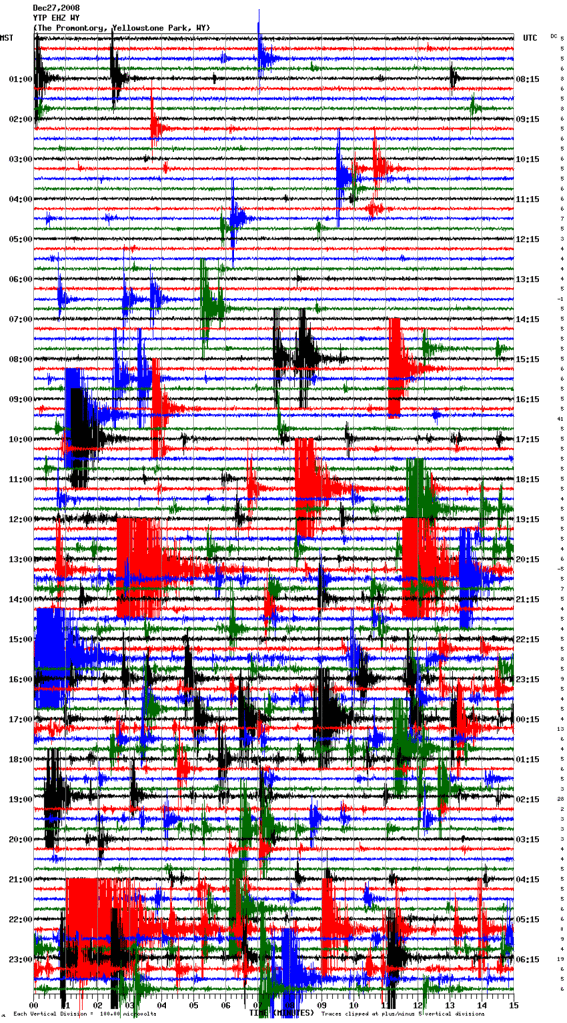
December 28

December 29

See updated station information here
Wasn´t someone´s dad in here a famous seismologist? Could that someone maybe ask his dad to interpret this chain and give a professional opinion? Thanks in advance
"High winds can cause minor quake readings as well"
MoonMine

I apologize for the large post, but the images are duly compressed and I think it is good to see the overview on a single page.
LKW (North Station) See previous.
YLT (West station):
December 26

December 27

December 28

December 29

YTP (East Station):
December 26

December 27

December 28

December 29

See updated station information here
Wasn´t someone´s dad in here a famous seismologist? Could that someone maybe ask his dad to interpret this chain and give a professional opinion? Thanks in advance
"High winds can cause minor quake readings as well"
MoonMine
new topics
-
Swedish Minister for Gender Equality is Seeking Treatment for Phobia of Bananas
Other Current Events: 4 hours ago -
Satanic ‘Little Season’ of Deception.. Awaken to the Handiwork of the Creator.
ATS Skunk Works: 5 hours ago -
USA-BIDEN and CHINA-Xi Agree Not To Let Artificial Intelligence Decide Nuclear Weapons Use.
World War Three: 5 hours ago -
The mysterious death of Aileen Conway
General Chit Chat: 8 hours ago
top topics
-
Does the Trump win mean No More Taylor Swift??
Politicians & People: 15 hours ago, 12 flags -
The mysterious death of Aileen Conway
General Chit Chat: 8 hours ago, 6 flags -
USA-BIDEN and CHINA-Xi Agree Not To Let Artificial Intelligence Decide Nuclear Weapons Use.
World War Three: 5 hours ago, 3 flags -
Satanic ‘Little Season’ of Deception.. Awaken to the Handiwork of the Creator.
ATS Skunk Works: 5 hours ago, 3 flags -
Swedish Minister for Gender Equality is Seeking Treatment for Phobia of Bananas
Other Current Events: 4 hours ago, 3 flags -
Half-Life 2 is 20 Years Old - its Also Free on Steam until the 18th
Video Games: 12 hours ago, 1 flags
active topics
-
The Trump effect 6 days after 2024 election
2024 Elections • 150 • : cherokeetroy -
President-elect TRUMP Picks MATT GAETZ for his ATTORNEY GENERAL - High Level PANIC Ensues.
2024 Elections • 91 • : Xtrozero -
Does the Trump win mean No More Taylor Swift??
Politicians & People • 49 • : JadedGhost -
TODAY IS A HUGE ELECTION DAY FOR AMERICA - November 5th 2024 - Reports from Around The Nation.
2024 Elections • 750 • : WeMustCare -
On Nov. 5th 2024 - AMERICANS Prevented the Complete Destruction of America from Within.
2024 Elections • 156 • : WeMustCare -
President-Elect DONALD TRUMP's 2nd-Term Administration Takes Shape.
Political Ideology • 213 • : WeMustCare -
Satanic ‘Little Season’ of Deception.. Awaken to the Handiwork of the Creator.
ATS Skunk Works • 4 • : NorthOS -
-@TH3WH17ERABB17- -Q- ---TIME TO SHOW THE WORLD--- -Part- --44--
Dissecting Disinformation • 3284 • : 777Vader -
Swedish Minister for Gender Equality is Seeking Treatment for Phobia of Bananas
Other Current Events • 2 • : WeMustCare -
USA-BIDEN and CHINA-Xi Agree Not To Let Artificial Intelligence Decide Nuclear Weapons Use.
World War Three • 5 • : nugget1
